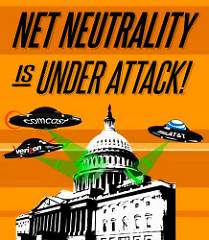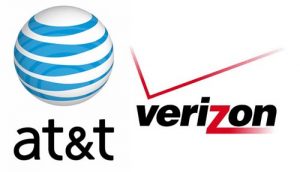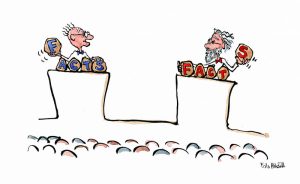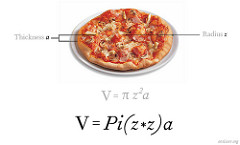
The author of this article is Robert SOMOGYI. Robert is a postdoctoral fellow at CORE (Université catholique de Louvain). In his Ph.D. thesis, prepared at Ecole Polytechnique and CREST, he analyzed the price setting behavior of firms that face capacity constraints under various market settings. Recently, he has been working on issues related to the digital economy in general and net neutrality in particular. For more information and contact info, visit Robert’s homepage.
Zero-rating (also called “sponsored data” or “free data services”) is a commercial agreement between a mobile internet service provider (ISP) and a content provider (CP) excluding the CP’s data from users’ monthly data cap. A typical example is T-Mobile US’s Binge On program, under which T-Mobile’s users can watch an unlimited amount of Youtube and other videos through the 4G network as doing so does not count against their data caps.

This practice constitutes a violation of the net neutrality principle as not all data packages are treated equally, some count against users’ data cap and some do not. Although on the one hand zero-rating programs benefit consumers by offering additional free data, on the other hand current examples show they carry real risks as well. A report released by Tom Wheeler in January 2017, shortly before stepping down as chairman of the FCC, the US telecom regulator, argued that two specific zero-rating offerings “may harm consumers and competition by unreasonably discriminating in favor of downstream providers owned or affiliated with the network providers.”
Moreover, zero-rating has become a widespread practice: a study in 2014 covering 180 mobile carriers serving 2.4 billion customers worldwide found that 49% of mobile carriers engage in some form of it (Allot Communications, 2014). Accordingly, net neutrality in general and zero-rating in particular are of considerable interest to both regulatory agencies and the general public. For instance BEREC, the EU’s regulatory body of telecommunication, received a record number of 481.547 responses to the public consultation of new net neutrality rules in the summer of 2016 (BEREC, 2016). Similarly, the FCC received 3.7 million responses to its public consultation in 2015. Furthermore, zero-rating is cited as one of the driving forces of the proposed AT&T – Time Warner merger, thus its evaluation will be crucial for competition authorities as well.
Different types of zero-rating
To avoid confusion, it is worth noticing that zero-rating is often used in a broader sense than the definition above, describing any commercial agreement or unilateral decision of an ISP to exclude some content from usage-based pricing. The report by Stellman and Adams (2015) for the Center for Democracy & Technology provides a good typology of zero-rating arrangements.

- The first type of such arrangements is included in a data plan, and consists of content being exempted from users’ data cap, the main topic of this blog post.
- For the second type of zero-rating programs, no purchase is necessary, thus they are most common in the developing world where many users have a smartphone but cannot afford a data plan. A typical example is the Wikipedia Zero offer, a mobile carrier making Wikipedia pages available to all its customers.
- A third type of zero-rating program is the case of free content bundled with other products. For example, Tesla drivers can enjoy unlimited music streaming on Spotify or users of Kindle can download e-books using the so-called Amazon Whispernet.
- A fourth type of zero-rating is also called “earned data” because users can increase their data cap by watching advertising or downloading new apps.
As the economic stakes depend crucially on the type of the zero-rating program in question, in the remainder of this post I will exclusively focus on the first type of zero-rating arrangements.
Current examples of zero-rating programs
I will illustrate the different forms of zero-rating agreements (of the first type, involving data caps) by describing some typical examples from the US. For a recent review of zero-rating programs around the world, see Yoo (2016).
The most prominent example of what I call an open zero-rating program is T-Mobile US’s Binge On offer. Any video streaming service fulfilling T-Mobile’s technical requirements can join the Binge On program and consequently get zero-rated. Surprisingly, admission to Binge On is free for all CPs. Notice that I will use the terminology “open program” to highlight that any CP can join it; I do not require the admission to be free. Thanks to the permissive policy, more than 100 video providers are already part of the program, including the largest ones (Netflix, Youtube, Amazon Video) and even their competitors’ services (go90, DirecTV).

I distinguish open programs from exclusionary zero-rating programs. US mobile carriers AT&T and Verizon provide good examples of such offers. AT&T zero-rates its own DirecTV app under its Sponsored Data program, and Verizon zero-rates its subsidiary, a video provider called go90. Although both AT&T and Verizon claim that any video provider could join the program in exchange of payment, these fees are not public and likely to be prohibitively high. Indeed, the Obama-era FCC’s investigation in January 2017 found that
“AT&T’s charges far exceed the costs AT&T incurs in providing the sponsored data service. Thus, it would appear that AT&T’s practices inflict significant unreasonable disadvantages on edge providers and unreasonably interfere with their ability to compete against AT&T’s affiliate”
What is the current state of regulation?
Given the complexity of the trade-offs involved, and arguably in part due to the lack of sound economic analysis, the regulation mandates a case-by-case treatment of zero-rating programs both in the US and in the EU.
In the EU, BEREC explicitly discusses the practice of zero-rating under Article 3(2) of its Guidelines on the Implementation by National Regulators of European Net Neutrality Rules, issued in August 2016 (BEREC, 2016). Acknowledging that there “are different types of zero-rating practices which could have different effects on end-users”, BEREC mandates a case-by-case investigation of different zero-rating offerings. However, the regulation explicitly bans zero-rating offers where all content is blocked or slowed down once the data cap is reached except for the zero-rated content. Moreover, it states that offers that zero-rate entire classes of applications are less likely to be harmful than offers that zero-rate specific CPs. The implementation of this regulation is likely to result in some legal battles, in particular in the Netherlands that has a stricter net neutrality regulation. Indeed, T-Mobile Netherlands is refusing to pay the 50.000 € a day fine imposed by the Dutch regulator ACM due to its zero-rating program and will instead appeal to the courts.

Zero-rating regulation in the US is also in a constant state of flux. The FCC’s Open Internet Order, issued in 2015, mandated a case-by-case treatment of zero-rating arrangements, similarly to European regulation. The FCC has conducted an informal review of the existing programs for more than a year. Finally, in December 2016 it started a formal investigation sending several letters demanding explanations of the zero-rating practices of all major US mobile carriers. In January 2017, during the last days of the Obama-era FCC, the chairman issued a report condemning AT&T’s and Verizon’s exclusionary practices while judging T-Mobile’s open program harmless. However, this action was mostly symbolic as the incoming Trump administration was largely suspected to overturn this ruling. Indeed, one of the first actions of the new Republican chairman, Ajit Pai, was to stop the inquiry about zero-rating and state that
“[a]ny conclusions, preliminary or otherwise, expressed during the course of the inquiry will have no legal or other meaning or effect going forward.”
What do scholars have to say?
To date, the study of zero-rating has mostly been relegated to the realms of Law and Information Technology. For two recent summaries providing an overview of zero-rating programs and the current state of regulation, see Marsden (2016) and Yoo (2016).
The FCC’s and BEREC’s public consultations gave rise to numerous position papers discussing either the merits or the drawbacks of zero-rating programs, for instance Eisenach (2015), the ITIF report by Blake (2016) and the WWW Foundation’s report by Drossos (2015). For a rather impartial overview of the main arguments, see CDT’s report by Stellman and Adams (2015). Arguably, van Schewick (2015) presents the most comprehensive set of arguments against zero-rating, while the most comprehensive (informal) economic presentation of its merits is by Rogerson (2016).

Apart from my on-going work presented in the next section, a working paper from Jullien and Sand-Zantman (2016) has been the only attempt to model zero-rating in a formal economic setting. In this model, zero-rating is a tool for CPs to overcome the problem of the missing price on the market. Specifically, it views zero-rating as the modern equivalent of a toll-free number, an efficient way to give a discount to users who otherwise do not directly pay CPs. It shows that such a departure from net neutrality can be welfare improving. This model differs from my research paper in several key aspects. Firstly, I aim to model congestion more directly, by explicitly modeling the ISP’s capacity constraint and users’ data caps. Moreover, my model will also be suitable to explain the emergence and co-existence of different types of zero-rating programs, which seems to be a crucial factor in real-world examples.
A model of zero-rating
In Somogyi (2017), I model the mobile internet market as a two-sided market, with a monopolistic ISP connecting end users to CPs. There are three CPs: two video providers (VPs) that are potentially zero-rated and a provider representing all other content that is never zero-rated. Users view the two VPs as perfect substitutes, whereas they have Cobb-Douglas preferences between video and other content. CPs’ revenue comes from advertising, proportional to traffic on their website. This simplification is necessary to avoid dealing with a “three-sided” platform. The two VPs may differ in the revenue they produce per click. I will refer to the firm with lower ability to generate revenue as the weaker firm.

There is a finite number of identical end users who benefit from consumption, but face two constraints. Firstly, their consumption is limited by their data cap. Zero-rated content, by definition does not count against this data cap. Secondly, users become satiated by mobile internet consumption: there is an upper bound for total consumption per user, independently of zero-rating. I will refer to this cap as their ‘bliss point’.
The ISP is characterized by a fixed capacity constraint, if aggregate demand for all content from all consumers exceeds this capacity, then some consumers will get rationed. The ISP collects fixed subscription fees from all users served. Conversely, the ISP can only ask for compensation from a CP with which it entered into a zero-rating agreement. The ISP has three options: not to offer any zero-rating plans, offer an exclusive contract to one of the CPs, or offer an open zero-rating program where both CPs can join. The timing of the game is the following: the ISP chooses one of its three options; then CPs choose whether to accept the eventual offer simultaneously and independently; finally, end users make their consumption decisions simultaneously and independently.
The first result is that (excluding cases where the attractiveness of video is extremely low) when facing zero-rated content, users consume up to their bliss point. This means that despite being rational, users do not take into account the negative externality that their large consumption exerts on their peers, which results in congestion. The main trade-off the ISP faces is therefore the following: serve more end users and thus obtain a larger revenue from the consumer side by abstaining from zero-rating, or serve fewer consumers but extract part of the CPs’ profit by zero-rating. Therefore, zero-rating is more likely to be an optimal strategy of the ISP whenever revenue per click is large and whenever the subscription fee is small.
The second result is that open zero-rating programs, exclusionary zero-rating contracts, and not offering zero-rating can all be optimal strategies for the ISP. I identify the parameter regions leading to each outcome. For symmetric VPs, the more attractive video content is, the more likely it will get zero-rated. This result holds for asymmetric VPs when video is relatively attractive. However, for asymmetric VPs, the opposite may also happen: it is possible that the less attractive video content is, the more likely it gets zero-rated. The intuition for this result is the following: the ISP offers an exclusive zero-rating contract to the stronger firm. The less attractive video content is, the more the VP’s revenue jumps by the increased consumption if it is zero-rated, so the larger is the profit that the ISP can extract from the VP. Consequently, the ISP may zero rate content when it is either very unattractive or very attractive for consumers, but not in the intermediary region.
Furthermore, I identify a threshold level of attractiveness above which zero-rating improves consumer surplus and social welfare, and below which it may harm both consumers and social welfare. Intuitively, in the latter case the increased overall consumption of unattractive content creates congestion, a negative externality, leading to a classical tragedy of the commons situation. However, the welfare effects are ambiguous for unattractive content for the following reason: the harm coming from the congestion externality can be counterbalanced by the increased consumption of the product of more efficient content providers. I identify simple necessary and sufficient conditions under which zero-rating programs are welfare decreasing.
Conclusion
Zero-rating is a complex issue deserving in-depth analysis. My model fills a gap in the literature by highlighting the key role congestion plays on the mobile internet market. It shows that attractiveness of zero-rated content is crucial in understanding mobile carriers’ incentives to offer zero-rating programs. These incentives can be misaligned with the social optimum, in particular, profitable zero-rating offers can harm consumers if content is unattractive. On the other hand, zero-rating always improves social welfare when content is attractive. These results suggest that the case-by-case approach currently used by regulators in the US and the EU is not entirely unwarranted.
References
Allot Communications. (2014). App-centric operators on the rise.
Brake, D. (2016). Mobile Zero Rating: The Economics and Innovation Behind Free Data. Information Technology and Innovation Foundation, May 2016.
BEREC (2016). Report on the outcome of the public consultation on draft BEREC Guidelines on the Implementation by National Regulators of European Net Neutrality rules, BoR, 16(128).
Drossos, A. (2015). The real threat to the open Internet is zero-rated content. World Wide Web Foundation.
Eisenach, J. A. (2015). The economics of zero rating. Mimeo.
FCC (2015). Eighteenth Annual Report and Analysis of Competitive Market Conditions
With Respect to Mobile Wireless, Including Commercial Mobile Services. WT Docket,
(15-125).
Jullien, B., & Sand-Zantman, W. (2017). Internet Regulation, Two-Sided Pricing, and Sponsored Data (No. 735). Institut d’Économie Industrielle (IDEI), Toulouse.
Marsden, C. T. (2016). Zero Rating and Mobile Net Neutrality. In Net Neutrality Compendium (pp. 241-260). Springer International Publishing.
Rogerson, W. (2016). The economics of data caps and free data services in mobile broadband. CTIA report.
Somogyi, R. (2017). The Economics of Zero-Rating and Net Neutrality. CORE Discussion Papers 2016/47, Université catholique de Louvain.
Stallman, E., & Adams, R. S. (2016). Zero Rating: a framework for assessing benefits and harms. Center for Democracy and Technology.
van Schewick, B. (2016). T-Mobile’s Binge On violates key net neutrality principles.
Yoo, C. S. Avoiding the Pitfalls of Net Uniformity: Zero Rating and Nondiscrimination. Review of Industrial Organization, 1-28.
Photo credit: Free Press Pics via Visual Hunt / CC BY-NC-SA // Thomas Hawk via Visualhunt / CC BY-NC // iclarified.com // Flying Cloud via Visual Hunt / CC BY // Frits Ahlefeldt FritsAhlefeldt.com via Visual Hunt / CC BY-NC-ND// antiuser via Visual hunt / CC BY-NC-SA

